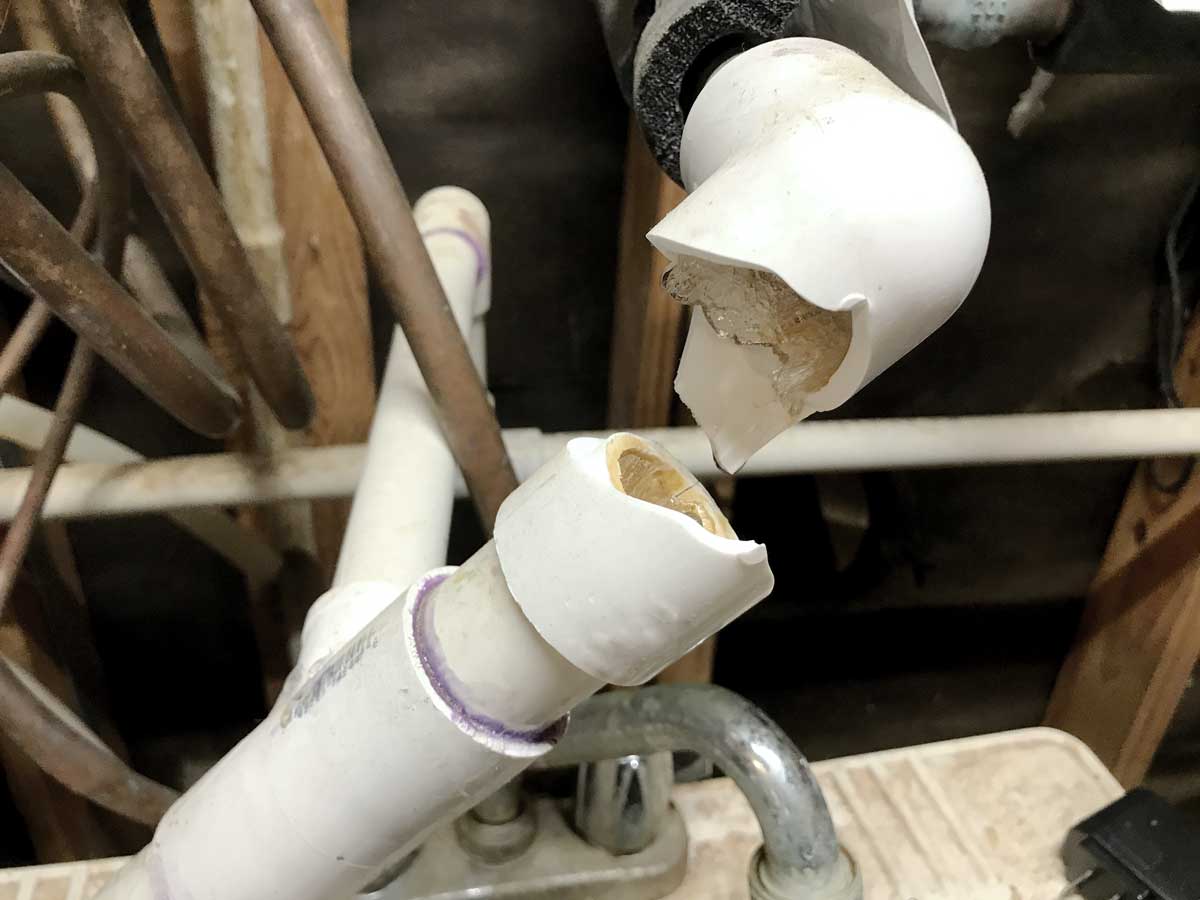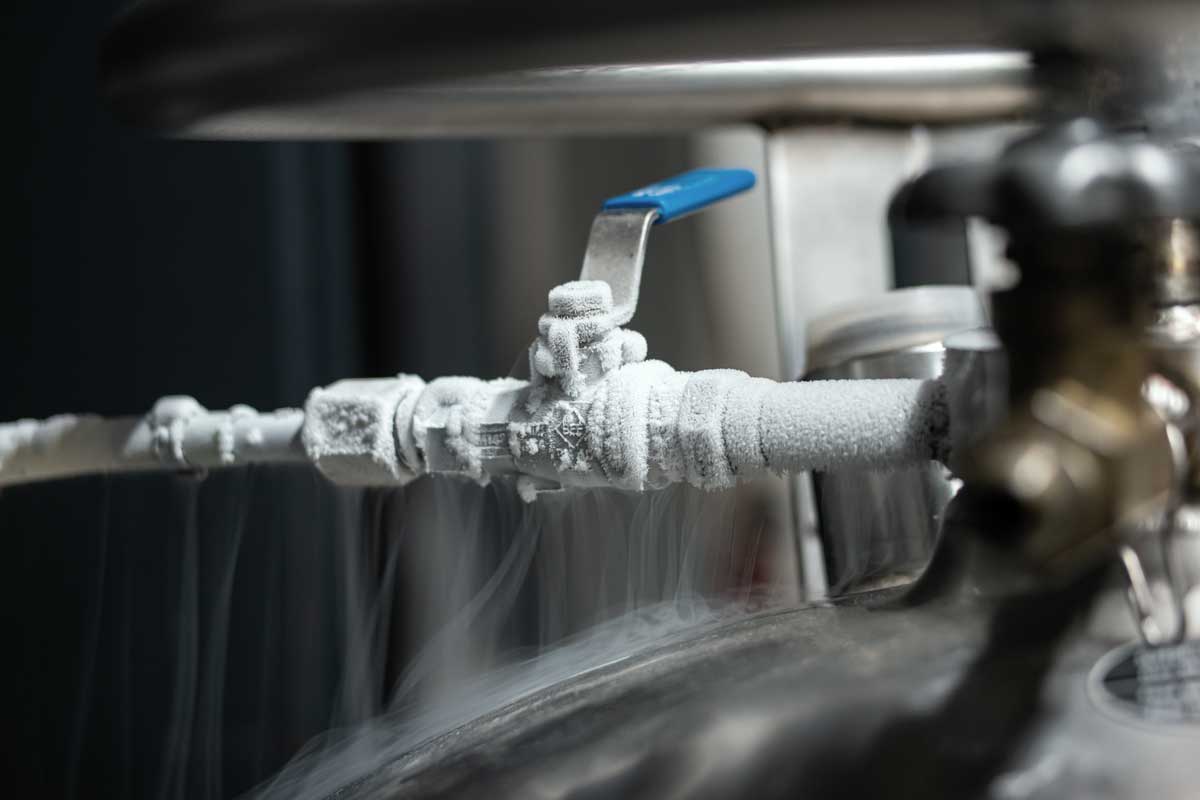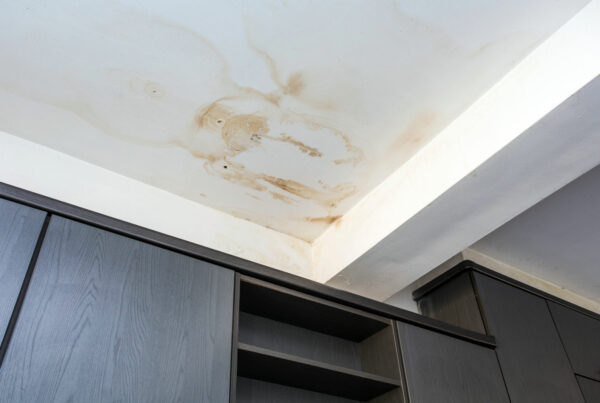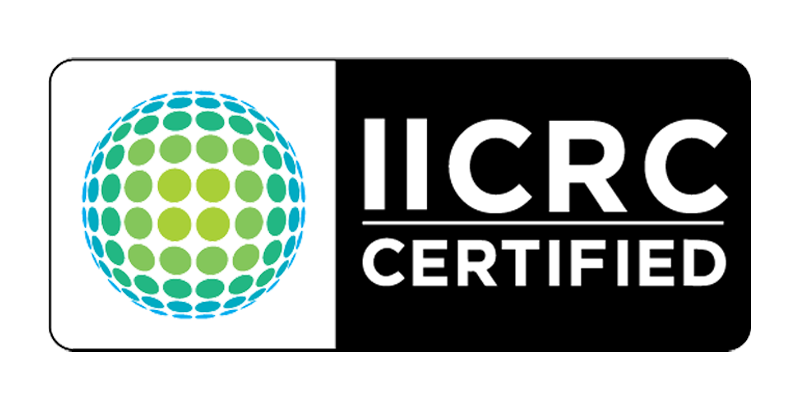If you live in a city like Austin or Dallas, you’re all too familiar with the vicious cold fronts of Texas. With little to no warning, temperatures plummet below freezing. Businesses and residences are left without power and heating. Ice encrusts everything, creating dangerous conditions on the roads—and in water pipes.
In Texas, frozen pipes are a common occurrence. Water naturally expands when it freezes and turns to ice. If the ice has nowhere to go, it starts putting pressure on the pipe, causing it to crack or burst. Additionally, when the water in the pipe thaws, it can cause further pressure on the already-damaged pipes, increasing the likelihood of a burst.
Even if you’ve never experienced a Texas freeze, water pipes in your commercial or residential building might be at risk of bursting in the next cold front. In this article, we’ll discuss how to mitigate water damage from burst pipes if it does occur.
Contents
Water Damage Has Devastating Effects
Left unaddressed, water damage can wreak havoc on homes and businesses. Action must be taken immediately; otherwise, permanent damage (and increased insurance costs) might incur. Here are some of the consequences of burst water pipes.
- Mold Growth: One of the most serious effects of water damage is the potential for mold growth. Mold thrives in damp and moist environments and can start to grow within 24-48 hours of water exposure. Exposure to mold can cause health problems, such as respiratory issues, allergic reactions, and headaches. It’s important to address water damage as quickly as possible to prevent mold growth.
- Structural Damage: Water can cause significant damage to the structure of a building if not addressed promptly. Wood, drywall, and other building materials can become weakened and deteriorate when exposed to water, leading to structural damage. This can include warping, swelling, and cracking. In severe cases, water damage can even cause the collapse of a building.
- Degradation of Personal Property: Water damage can also have a significant impact on personal property, including furniture, electronics, and personal belongings. Water can cause wood furniture to warp and swell, and it can cause electronic devices to short-circuit, rendering them inoperable. Paper documents and photographs may also be destroyed.


What Should I Do If My Pipes Freeze And Burst?
If you notice water on the floor (or a wet spot on the wall), don’t panic.
Follow these preliminary steps if a pipe has burst in your home or business. Then, call an experienced water damage reconstruction specialist, like Cavalry, to ensure your property is restored safely and properly.
- Turn off the water supply: Locate the main shut-off valve and turn off the water supply to the building. This will prevent any additional water from flowing through the damaged pipe and causing more damage.
- Open the faucet: Open the faucet that is closest to the damaged pipe to relieve any pressure and allow the water to drain out of the pipe. Flush the toilet a few times to relieve pressure, too.
- Thaw the pipe: If the pipe has not yet burst, you can try to thaw it using a hair dryer, hot towel, or hot water bottle. Start at the end of the pipe closest to the faucet and work your way toward the frozen section.
- Clean up the water: If there is water on the floor or other surfaces, it’s important to clean it up as soon as possible to prevent mold growth and other water damage. You can use towels, mops, and a shop vacuum to remove the water.
- Get in touch with a professional reconstruction company like Cavarly. It’s best practice to allow experts to ensure the property is thoroughly secured and restored to its pre-loss state after suffering water damage.
At Cavalry Construction, we are proud to be certified by the Institute of Inspection Cleaning and Restoration Certification (IICRC). Our team of trained professionals provides expert structural drying services in the wake of water damage caused by frozen pipes (and other water-related incidents, like storms). With over thirty years of restoration construction under our belt, we understand the complexities and nuances of every individual case, from commercial buildings to residential homes.
How Do I Prevent My Pipes From Freezing?
Nobody wants to deal with burst pipes in their building. If you notice the temperature is beginning to drop, take these preemptive steps to keep your pipes from freezing.
- Insulate the pipes: Insulate pipes in unheated areas, such as attics, garages, and crawl spaces, to help keep them warm. You can use foam pipe insulation, which is available at hardware stores.
- Seal air leaks: Seal air leaks around pipes to prevent cold air from getting in. This can be done using caulking or weather stripping.
- Keep the heat on: Even when you’re not home, keep the heat on in the building to help prevent pipes from freezing. You should set the temperature to at least 55°F.
- Disconnect hoses: Disconnect garden hoses from outdoor faucets before winter to prevent the water in the hoses from freezing and causing damage to the faucets.
- Allow faucets to drip: On very cold days, allowing faucets to drip slightly helps prevent pipes from freezing.
- Locate your main shut-off valve: In the event of a frozen pipe, it’s important to know where your main shut-off valve is located so that you can turn off the water supply to the building.
In Texas, especially in cities like Austin and Dallas, it’s crucial to stay proactive about frozen pipes. If a brutal cold snap hits and you lose electricity, dealing with a burst pipe will only add to your headache. Without electricity, it’s hard to use equipment like fans or vacuums to speed up the drying process. Power outages can also cause water heaters to fail, which leads to more leaks.
Frozen Pipe FAQs
Here are some other common questions we get asked about frozen pipes and water damage.
What should I do if I think my pipes are frozen, but not yet burst?
You still have time to act. Turn on the faucet nearest the pipe and let the water run. This will help to relieve any pressure that is building up in the pipe and may prevent a burst. You can try to thaw the frozen pipe, again using a hair dryer, hot towel, or hot water bottle. You can also wrap the frozen pipe with insulation material, such as fiberglass or foam, to help keep it warm. If you’re afraid the pipe will burst regardless, give your trusted reconstruction team a call!
Cavalry Is Here In Times Of Need
We have proudly served Texas communities since 1989. Whether you’re dealing with water damage from a burst pipe, storm damage, or any other kind of loss to your commercial or residential property, Cavalry will answer the call.
No matter the time of day, we respond with the urgency and dedication each specific case deserves. We work hand and hand with the insurance company to make this process as easy as possible for you. If you have questions about water damage restoration or other reconstruction services, drop us a line. Our team is here to answer your call 24/7. You can reach us at 888-601-3473.




Reach us anytime
Our clients count on us to help restore their homes, properties, and lives, and we’re always ready to rise to the occasion!




